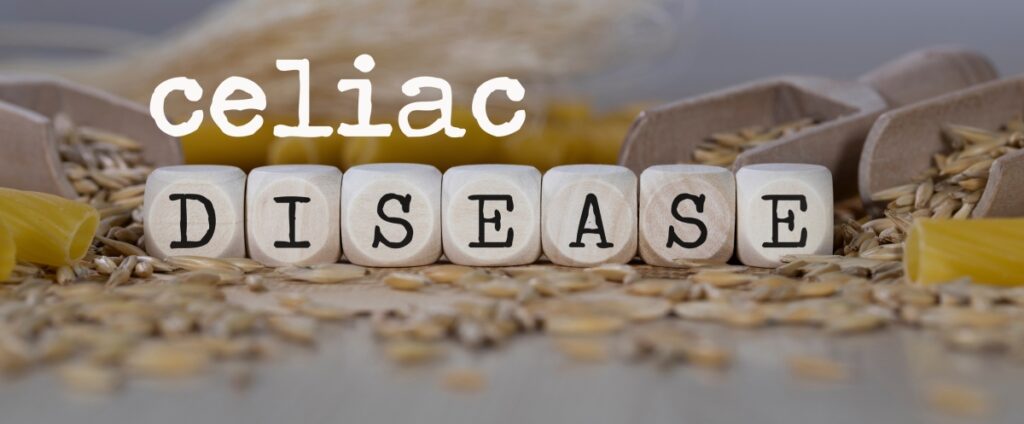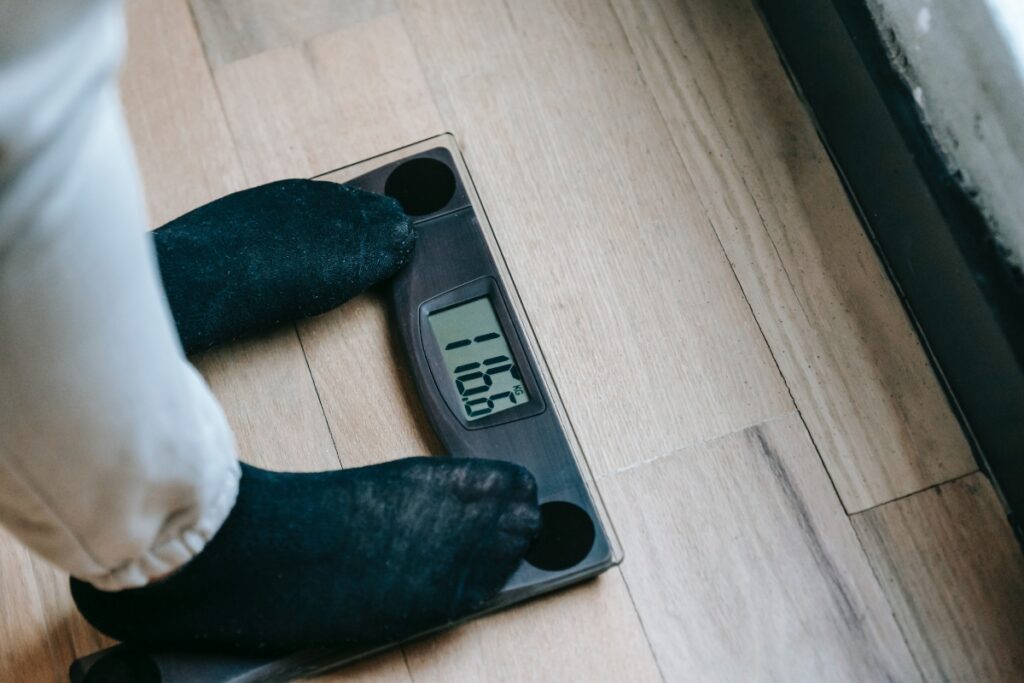
The Benefits of a Gluten-Free Diet


The Benefits of a Gluten-Free Diet
A gluten-free diet may be difficult to follow, because gluten-containing foods are everywhere. For many people, excluding gluten can reduce inflammation and help with their pesky symptoms.
However, everyone has a different reaction to gluten, and some people tolerate it just fine, so you need to try a gluten free diet to see if it affects you or not.
In this article, we’ll explain why gluten can be a problem and whether you should try a gluten-free diet.
What is gluten?

Gluten is part of a protein family called prolamins that is found in wheat, barley, rye, and oats. The wheat kernel contains up to 15% proteins, out of which 10% to 15% are albumin or globulin, and the rest is gluten.
Gluten is a combination of many different proteins, primarily gliadin and glutenin.
“Gluten” is derived from the Latin word gluten, which means glue.
Gluten is linked to five main conditions and diseases:
- Celiac disease
- Non-celiac gluten sensitivity
- Wheat allergy
- Gluten ataxia
- Dermatitis herpetiformis
However, people without any of the diseases above can be sensitive to gluten.
Gluten intolerance, sensitivity, or non-celiac gluten sensitivity (NCGS)

Gluten intolerance, also called gluten sensitivity or NCGS, can be experienced by anyone who does not have a wheat allergy or celiac disease. These patients tend to experience digestive or inflammatory symptoms throughout the body when they consume gluten. These symptoms go away when they stop gluten consumption.
Gluten can cause a leaky gut in anyone, whether they have celiac disease, gluten sensitivity, or not. This can happen even with trace amounts of gluten.
Gliadin (one of the gluten’s main components) activates zonulin signaling, which leads to increased intestinal permeability—otherwise known as leaky gut.
Zonulin is a protein that regulates gut permeability.
What are the symptoms of gluten intolerance or non-celiac gluten sensitivity?
Everyone has a different reaction to gluten. Many are asymptomatic, while others develop some of the following symptoms.
The symptoms include:
- Irritable bowel syndrome (IBS)-like symptoms:
- Abdominal pain
- Bloating
- Bowel habit abnormalities, like diarrhea or constipation
- Fatigue
- Brain fog
- Headaches
- Joint and muscle pain or numbness
- Dermatitis (eczema or skin rash)
- Depression
- Anemia
Keep in mind also that these symptoms are not specific to gluten sensitivity. They could also come from other causes. But if you go gluten-free for a few weeks and the symptoms subside, then the symptoms are likely caused by gluten sensitivity.
Gluten sensitivity can also contribute to the development of autoimmune diseases by increasing leaky gut, oxidative stress, and inflammation.
Therefore, if you struggle with any of the symptoms above, it may be worth trying a gluten-free diet for a few months.
Celiac disease

Celiac disease is an autoimmune condition where the immune system attacks the small intestine when you eat gluten.
The immune response inflames the gut lining and destroys the villi, the finger-like structures that help with nutrient absorption in the intestine. This can cause severe gut distress. Small intestine damage can result in common gastrointestinal symptoms, such as distension and altered bowel habits.
The only treatment for celiac disease is complete avoidance of gluten. Many celiac patients can get sick if their food even touches gluten.
Tests for celiac disease
- A blood test for antibodies against gluten and transglutaminase (serology testing)
- A duodenal (upper intestine) biopsy, performed around the same time as serologic testing. This biopsy must be done with ongoing gluten exposure and symptoms.
Symptoms of celiac disease
Symptoms of celiac disease are often more severe than those of gluten sensitivity. They include:
- Diarrhea
- Abdominal pain
- Weight loss
- Abdominal bloating
- Anemia
- Failure to thrive in children and babies
- Growth disturbance in children
What complications can arise if a person with celiac disease continues to eat gluten?
Malabsorption and extraintestinal complications could develop if the patient does not follow a gluten-free diet. Malabsorption is a term that refers to poor nutrient absorption.
A gluten-free diet can help prevent long-term complications such as osteoporosis, anemia, cancer, and other autoimmune diseases.
What foods to avoid

- Bread has a high gluten content. Gluten accounts for approximately 80% of the protein in bread wheat.
- Pasta has gluten but in lower amounts when compared to bread.
- Pizza, cereals, pastries, cookies, and biscuits contain gluten and should be avoided.
- Gluten can be found in imitation meats, broth, canned soups, beer, soy sauce, ice cream, licorice, ketchup, and anything containing malt.
- Gluten can also be found in cosmetics and hair products.
- Cross-contamination can happen. Try to avoid gluten contamination in the kitchen, restaurant, and the workplace.
Be on the lookout for labels for gluten-containing ingredients and certified gluten-free foods.
Packaged food should have the following :
- A gluten-free label. To be considered gluten-free, a food must contain less than 20 parts per million (ppm) of gluten. Regardless, double-check the ingredients. Remember that “wheat-free” does not always imply “gluten-free.”
- Examine the allergen list. Wheat, soy, egg, nuts, and milk are all common allergens. The absence of allergen in the ingredient list does not imply that a product is gluten-free. Barley and rye are not the most common allergens that must be listed.
- Be on the lookout for:
- Wheat
- Barley
- Rye
- Malt
- Brewer’s yeast
- Oats (unless they’re gluten-free)
What are gluten-free foods and alternatives?
- Gluten-free whole grains
- Instead of white rice, try quinoa, amaranth, teff, millet, sorghum, brown or wild rice, buckwheat, and gluten-free oats
- Gluten-free whole grain pasta instead of corn or rice pasta
- Popcorn is a gluten-free blessing!
- Fresh meats, fish, and seafood
- Nuts and seeds
- Fruits and vegetables, as well as beans and legumes, are excellent sources of fiber in a gluten-free diet
What are the benefits of a gluten-free diet?

If gluten is a problem for you, you will experience health improvements on a gluten-free diet.
Both those with celiac disease and gluten-sensitive people experience the following health improvements once they go on gluten-free diets.
Many people with non-celiac gluten sensitivity are not aware that they’re gluten-sensitive. So if you experience some of these symptoms, you may benefit from trying a gluten-free diet.
Better energy levels
Inflammation can cause a lack of energy and a general feeling of tiredness and exhaustion. Fatigue is a common finding in patients with celiac disease, which improves with a gluten-free diet.
Studies looked at how people with celiac disease felt before and after going gluten-free. Following a gluten-free diet, the participants experienced less fatigue.
People who are sensitive to gluten often suffer from fatigue both from inflammation and nutrient deficiencies. With gluten sensitivity, the withdrawal of gluten also helps with fatigue.
Fewer headaches and brain fog
According to one study performed on patients with celiac disease, following a gluten-free diet can help with headaches.
Brain fog is a term used to describe impairments in memory (loss of short-term and long-term memory), short attention span, and reduced cognition.
Patients with celiac disease who are exposed to gluten commonly experience brain fog, and those who begin a gluten-free diet notice an improvement in brain fog symptoms.
Gluten-sensitive people frequently experience fatigue, brain fog, and headaches within two hours of consuming gluten. Avoiding gluten could ease these symptoms.
Apart from gluten, histamine is a common food component that can cause migraine headaches in both celiacs and gluten-sensitive people.
Diamine oxidase (DAO) is an enzyme that breaks down histamine. Possibly, the gut inflammation from gluten exposure can reduce DAO production in both conditions. Reduced DAO concentrations or activity can cause an increase in histamine concentration, resulting in:
- Headaches
- Migraines
- Allergic reactions
Gluteomorphins are neuroactive peptides produced by the digestion of wheat gluten. They are released into the bloodstream when gluten is digested in the gut, resulting in addictive brain responses towards eating even more gluten.
Reduced joint pain and discomfort

Several studies confirmed that a gluten-free diet can ease joint pain.
In a study, a woman with celiac disease experiencing joint pain and stiffness was put on a gluten-free diet. She noticed an improvement in her arthritis within only one week of following the diet.
A gluten-free diet may also help with joint pain in gluten-sensitive people.
Relieving and treating digestive problems
People with gluten-related disorders, such as celiac disease and non-celiac gluten sensitivity, are highly encouraged to follow a gluten-free diet.
According to a study, people with celiac disease who have digestive problems like diarrhea, steatorrhea, constipation, abdominal pain, and bloating noticed a significant and quick improvement when they switched to a gluten-free diet.
Gluten-free diets have advantages even for people with gut issues who do not have celiac disease.
In one study, patients with diarrhea-predominant IBS who followed a gluten-free diet quickly saw an improvement in their condition.
Better skin
Often skin conditions, like dermatitis herpetiformis, come with celiac disease.
A gluten-free diet helps with both dermatologic and gastrointestinal symptoms. The skin must be treated for several weeks to months before an improvement is noticed.
A gluten-free diet can help people with dermatologic conditions, especially if they have celiac disease and dermatitis herpetiformis.
Some gluten-sensitive people experience skin manifestations as a result of gluten consumption. The skin conditions that affect these people are similar to eczema, psoriasis, or dermatitis herpetiformis. In a clinical study, 17 gluten-sensitive subjects saw improvements in their skin after following a gluten-free diet.
Bone mass and strength
Celiac disease can cause osteoporosis due to poor absorption of calcium and vitamin D. Osteoporosis is a common disorder characterized by low bone mass, poor bone quality, and a high risk of fracture.
According to a study, a gluten-free diet can significantly improve bone mineralization on its own in people with celiac disease.
Another study researching bone recovery in a five-year follow-up study found that the majority of the improvements in bone mineral density occurred within the first year of starting a gluten-free diet. After five years on a gluten-free diet, the bone diseases in patients with celiac disease were cured in the majority of cases.
A further study found that a gluten-free diet moderately improved bone mass density with low impact fractures in people with celiac disease.
With gluten sensitivity, an unbalanced diet and low dietary calcium intake are often linked to weight loss, anemia, and decreased bone mineral density. A daily calcium intake of 1,500 mg and vitamin D supplementation are recommended for both people with celiac disease and gluten sensitivity.
Improved nutrient absorption and weight normalization

Some celiac disease patients become unhealthily thin due to malabsorption. When they stop eating gluten and manage their celiac disease, they can finally regain some healthy weight.
Other people cannot lose excess body fat due to inflammation. In these cases, they may lose weight on a gluten-free diet.
Generally speaking, a gluten-free diet can be healthy for everyone if gluten-free highly processed foods are avoided and other whole grains, fruits, and veggies are consumed.
Conclusion
A gluten-free diet can be very beneficial for those with celiac disease and non-celiac gluten sensitivity:
- Allows the gut to heal and reseal the gut lining
- Improves nutrient absorption
- Relieves inflammatory symptoms
- Reduces risk of diseases associated with gluten sensitivity and autoimmunity
People with celiac disease and gluten sensitivity benefit from a gluten-free diet. If you have some inflammatory symptoms, you should experiment with a gluten-free diet to see if you could be gluten sensitive.
Risk of gluten exposure?
If you get inflammation from gluten, very small amounts of it can trigger symptoms.
So, be prepared when eating out, as many restaurants do not keep gluten-containing foods separate. This means that whenever you dine out, you run the risk of being exposed to gluten. Even very small amounts of gluten contamination can be a problem if you’re more sensitive.
Gluten Guardian contains Peptidase DPP IV, a digestive enzyme that can digest gluten. It cannot treat celiac disease or gluten sensitivity but may help with minor gluten exposure.
References
- Niland B, Cash BD. Health benefits and adverse effects of a gluten-free diet in non-celiac disease patients. Gastroenterol Hepatol (N Y). 2018;14(2):82-91.
- Jones AL. The gluten-free diet: Fad or necessity? Diabetes Spectr. 2017;30(2):118-123.
- Biesiekierski JR. What is gluten?: What is gluten? J Gastroenterol Hepatol. 2017;32 Suppl 1:78-81.
- Akhondi H, Ross AB. Gluten and associated medical problems. In: StatPearls. StatPearls Publishing; 2021.
- Watkins RD, Zawahir S. Celiac disease and nonceliac gluten sensitivity. Pediatr Clin North Am. 2017;64(3):563-576.
- Hollon J, Puppa EL, Greenwald B, Goldberg E, Guerrerio A, Fasano A. Effect of gliadin on permeability of intestinal biopsy explants from celiac disease patients and patients with non-celiac gluten sensitivity. Nutrients. 2015;7(3):1565-1576.
- Drago S, El Asmar R, Di Pierro M, et al. Gliadin, zonulin and gut permeability: Effects on celiac and non-celiac intestinal mucosa and intestinal cell lines. Scand J Gastroenterol. 2006;41(4):408-419.
- Catassi C. Gluten sensitivity. Ann Nutr Metab. 2015;67 Suppl 2(Suppl. 2):16-26.
- Lerner A, Shoenfeld Y, Matthias T. Adverse effects of gluten ingestion and advantages of gluten withdrawal in nonceliac autoimmune disease. Nutr Rev. 2017;75(12):1046-1058.
- Celiac disease. J Allergy Clin Immunol. 2015;135(5):1107.
- Schuppan D, Zimmer K-P. The diagnosis and treatment of celiac disease. Dtsch Arztebl Int. 2013;110(49):835-846.
- Zuvarox T, Belletieri C. Malabsorption Syndromes. In: StatPearls. StatPearls Publishing; 2021.
- Label reading & the FDA. Celiac.org. Accessed October 25, 2021. https://celiac.org/gluten-free-living/gluten-free-foods/label-reading-the-fda/
- Skjellerudsveen BM, Omdal R, Grimstad T. Fatigue in celiac disease: A review of the literature: Fatigue in celiac disease. JGH Open. 2019;3(3):242-248.
- Siniscalchi M, Iovino P, Tortora R, et al. Fatigue in adult coeliac disease. Aliment Pharmacol Ther. 2005;22(5):489-494.
- Roszkowska A, Pawlicka M, Mroczek A, Bałabuszek K, Nieradko-Iwanicka B. Non-celiac gluten sensitivity: A review. Medicina (Kaunas). 2019;55(6):222.
- Ameghino L, Farez MF, Wilken M, Goicochea MT. Headache in patients with celiac disease and its response to the gluten-free diet. J Oral Facial Pain Headache. 2019;33(3):294-300.
- Yelland GW. Gluten-induced cognitive impairment (“brain fog”) in coeliac disease: Cognitive impairment in coeliac disease. J Gastroenterol Hepatol. 2017;32 Suppl 1:90-93.
- Theoharides TC, Stewart JM, Hatziagelaki E, Kolaitis G. Brain “fog,” inflammation and obesity: key aspects of neuropsychiatric disorders improved by luteolin. Front Neurosci. 2015;9:225.
- Croall ID, Hoggard N, Aziz I, Hadjivassiliou M, Sanders DS. Brain fog and non-coeliac gluten sensitivity: Proof of concept brain MRI pilot study. PLoS One. 2020;15(8):e0238283.
- Griauzdaitė K, Maselis K, Žvirblienė A, et al. Associations between migraine, celiac disease, non-celiac gluten sensitivity and activity of diamine oxidase. Med Hypotheses. 2020;142(109738):109738.
- Shewry PR, Hey SJ. Do we need to worry about eating wheat? Nutr Bull. 2016;41(1):6-13.
- Bruzzese V, Scolieri P, Pepe J. Efficacy of gluten-free diet in patients with rheumatoid arthritis. Reumatismo. 2021;72(4):213-217.
- Bourne JT, Kumar P, Huskisson EC, Mageed R, Unsworth DJ, Wojtulewski JA. Arthritis and coeliac disease. Ann Rheum Dis. 1985;44(9):592-598.
- Hafström I, Ringertz B, Spångberg A, et al. A vegan diet free of gluten improves the signs and symptoms of rheumatoid arthritis: the effects on arthritis correlate with a reduction in antibodies to food antigens. Rheumatology (Oxford). 2001;40(10):1175-1179.
- Lerner A, Matthias T. Rheumatoid arthritis-celiac disease relationship: joints get that gut feeling. Autoimmun Rev. 2015;14(11):1038-1047.
- Lerner BA, Green PHR, Lebwohl B. Going against the grains: Gluten-free diets in patients without celiac disease-worthwhile or not? Dig Dis Sci. 2019;64(7):1740-1747.
- Newberry C. The gluten-free diet: Use in digestive disease management. Curr Treat Options Gastroenterol. 2019;17(4):554-563.
- Murray JA, Watson T, Clearman B, Mitros F. Effect of a gluten-free diet on gastrointestinal symptoms in celiac disease. Am J Clin Nutr. 2004;79(4):669-673.
- Vazquez-Roque MI, Camilleri M, Smyrk T, et al. A controlled trial of gluten-free diet in patients with irritable bowel syndrome-diarrhea: effects on bowel frequency and intestinal function. Gastroenterology. 2013;144(5):903-911.e3.
- Pasternack C, Hervonen K, Mansikka E, et al. Persistent skin symptoms after diagnosis and on a long-term gluten-free diet in dermatitis herpetiformis. Acta Derm Venereol. 2021;101(9):adv00555.
- Ozyemisci-Taskiran O, Cengiz M, Atalay F. Celiac disease of the joint. Rheumatol Int. 2011;31(5):573-576.
- Muddasani S, Rusk AM, Baquerizo Nole KL. Gluten and skin disease beyond dermatitis herpetiformis: a review. Int J Dermatol. 2021;60(3):281-288.
- Bonciolini V, Bianchi B, Del Bianco E, Verdelli A, Caproni M. Cutaneous manifestations of non-Celiac Gluten Sensitivity: Clinical histological and immunopathological features. Nutrients. 2015;7(9):7798-7805.
- Mora S, Weber G, Barera G, et al. Effect of gluten-free diet on bone mineral content in growing patients with celiac disease. Am J Clin Nutr. 1993;57(2):224-228.
- Stazi A-V, Trecca A, Trinti B. Osteoporosis in celiac disease and in endocrine and reproductive disorders. World J Gastroenterol. 2008;14(4):498-505.
- Rosen CJ. The epidemiology and pathogenesis of osteoporosis. In: Feingold KR, Anawalt B, Boyce A, et al., eds. Endotext. MDText.com; 2020.
- Kemppainen T, Kröger H, Janatuinen E, et al. Bone recovery after a gluten-free diet: a 5-year follow-up study. Bone. 1999;25(3):355-360.
- Kotze LMS, Skare T, Vinholi A, Jurkonis L, Nisihara R. Impact of a gluten-free diet on bone mineral density in celiac patients. Rev Esp Enferm Dig. 2016;108(2):84-88.
- Skodje GI, Minelle IH, Rolfsen KL, et al. Dietary and symptom assessment in adults with self-reported non-coeliac gluten sensitivity. Clin Nutr ESPEN. 2019;31:88-94.
- Bathrellou E, Kontogianni MD, Panagiotakos DB. Celiac disease and non-celiac gluten or wheat sensitivity and health in later life: A review. Maturitas. 2018;112:29-33.
- Ohlsson B, Orho-Melander M, Nilsson PM. Higher levels of serum zonulin may rather be associated with increased risk of obesity and hyperlipidemia, than with gastrointestinal symptoms or disease manifestations. Int J Mol Sci. 2017;18(3):582.
- Pantaleão LC, Rogero MM, Amancio OMS. Brazilian Society for Food and Nutrition position statement: gluten-free diet. Nutrire. 2016;41(1). doi:10.1186/s41110-016-0005-y
- Reilly NR. The gluten-free diet: Recognizing fact, fiction, and fad. J Pediatr. 2016;175:206-210.
- Gutiérrez S, Pérez-Andrés J, Martínez-Blanco H, et al. The human digestive tract has proteases capable of gluten hydrolysis. Mol Metab. 2017;6(7):693-702.
